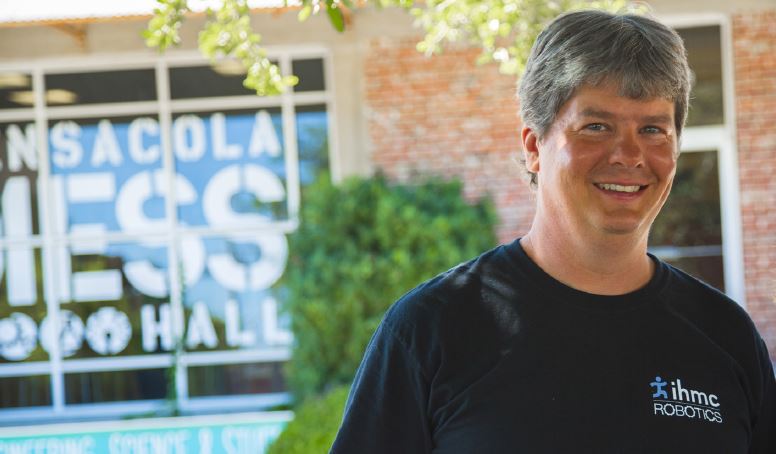Alumnus Robotics Researcher Keeps Droids on Their Feet
-
-
slice.mit.edu
Filed Under
Recommended

Update April 29, 2019: In the past few years, Dr. Pratt and his IHMC team have been improving walking, perception, and planning algorithms for several robots, including the NASA Johnson Space Center's Valkyrie humanoid robot. They have also started designing a new humanoid robot, inspired by human gymnasts, and hope to have it walking around their lab and maybe even performing on a balance beam in the coming years. Pratt returns to MIT to celebrate his 25th reunion at Tech Reunions, June 7-9, 2019. See who else is coming, and register today.
Someday soon, robots will stride into an earthquake-shattered city or a contaminated nuclear plant and perform tasks too perilous for humans. Jerry Pratt '94, MEng '95, PhD '00, senior research scientist at the Florida Institute for Human and Machine Cognition (IHMC) in Pensacola, will keep them on their feet. Pratt writes walking algorithms for robots. In October, he will be inducted into the Florida Inventors Hall of Fame.
Pratt built his first invention as a teen in Ashland, Wisconsin: he entered his Knockout Keyless Door Lock in a competition sponsored by Duracell and earned a $10,000 scholarship. “You knocked on a door in a secret pattern to unlock it,” he remembers. “I thought it would be cool to have something like that on my tree fort.” At MIT he ran varsity track and cross-country and played intramural hockey, basketball, and football on the renowned teams Smell the Stick, Juicy Chicken, and the Flanking Itos.
As a graduate student, Pratt worked on bipedal robots in the Leg Laboratory. One of them, Spring Turkey, now resides at the MIT Museum. “It was one of the first walking robots that was good at being compliant on unfamiliar terrain,” he notes.
Pratt and three other MIT engineers cofounded Yobotics in 2000. The startup built an exoskeleton to carry heavy loads over rough ground, a robotic arm, and an intelligent patient lifter for hospitals. In 2002 he joined the not-for-profit IHMC, where he directs multiple projects. This summer his software team won second place and a million dollars in DARPA’s Robotics Challenge, in which a remote-controlled humanoid robot had to drive a car through an obstacle course, traverse a pile of cinder blocks, and then open valves and cut through sheetrock.
“The big application in robotics right now is disaster recovery, where there’s rubble everywhere,” Pratt says. “Humanoid robots have the potential to provide a presence in dangerous areas while keeping the human operators safe.”
In 2013, Pratt and his wife, Megan Benson Pratt ’93, founded the Pensacola MESS Hall, a hands-on science museum. MESS, which stands for “math, engineering, science, and stuff,” is an allusion to Pensacola’s Navy culture. The facility serves up MESS Kits—experiments in a box—to about 20,000 visitors a year. Megan Pratt, who has a Harvard PhD in neuroscience and served for six years on the Pensacola City Council, is its executive director. The Pratts enjoy water sports, games, and camping with their school-aged daughter and son, who both like programming in the Media Lab’s Scratch language.
This article originally appeared in the September/October issue of MIT Technology Review magazine.






